CLOSING SOON – Charlotte Perriand, Design Museum // Epic Iran, V&A
A last minute dash to two very different exhibitions. Charlotte Perriand: The Modern Life reveals just how big a debt we owe to this influential mid-century designer. While Epic Iran is a sweeping survey of millennia of history, from earliest archaeology to contemporary art.
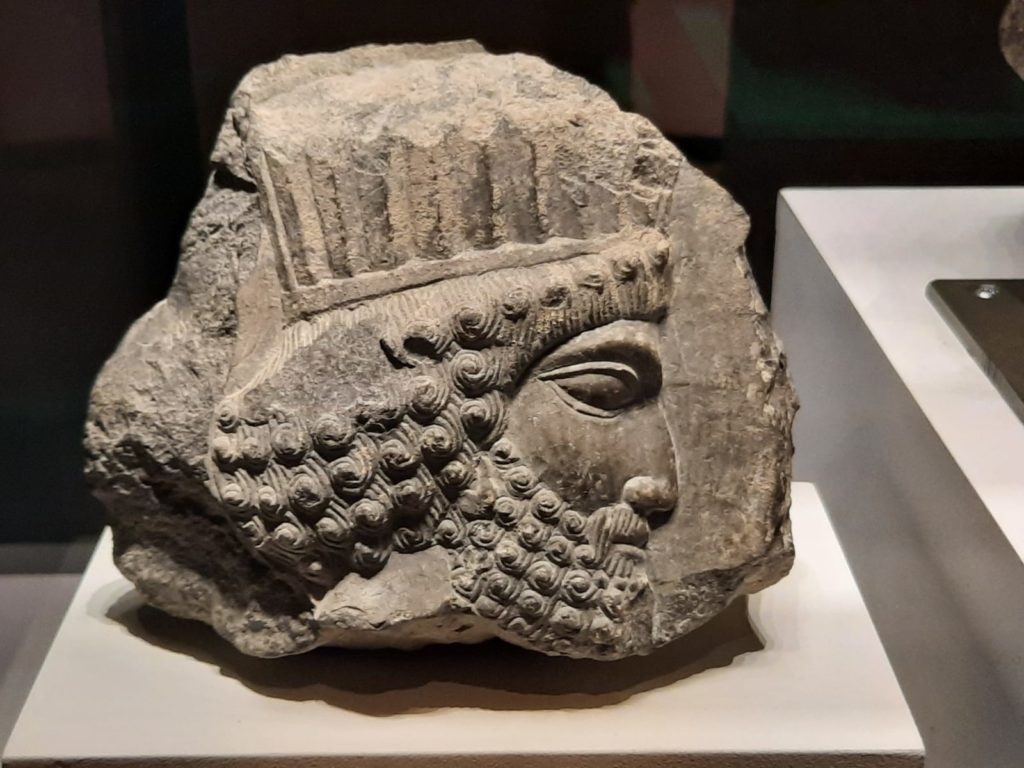
The Luxury Of Being Busy
I am counting my blessings right now. It doesn’t seem that long ago that I was desperate for cultural and historic activities to fill the long months of winter. I found enough to keep me going – in the form of walks, outdoor art and eventually outdoor theatre, but it was tough (relatively speaking: I recognise the privilege of not having any greater Covid challenges). Just a few short months later, I am frequently surprised to learn that yet another exhibition on my list is about to close. Some of them I can just about bear to miss. But I still have terrible FOMO from all those months of lockdown and so do my best to get to them when I can.
That is a longwinded way of saying that I have some exhibitions to share with you (both in Kensington) that are about to close. They otherwise have very little in common. At the Design Museum, Charlotte Perriand: The Modern Life is a look at the work of the French mid-century designer whose name is less famous than it deserves to be. At the Victoria & Albert Museum is an ambitious exhibition, taking in 5,000 years of history in the country we now call Iran. Epic Iran takes in history, archaeology, art, culture and religion to paint a picture of the civilisations that have come, gone, and shaped world events in the process.
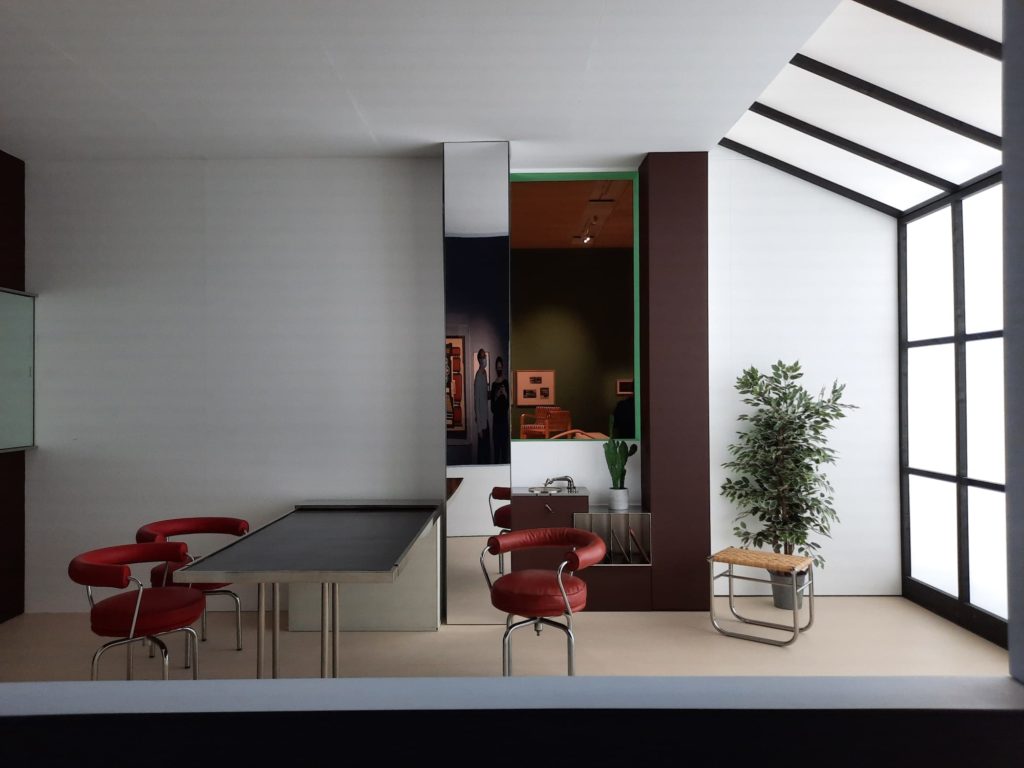
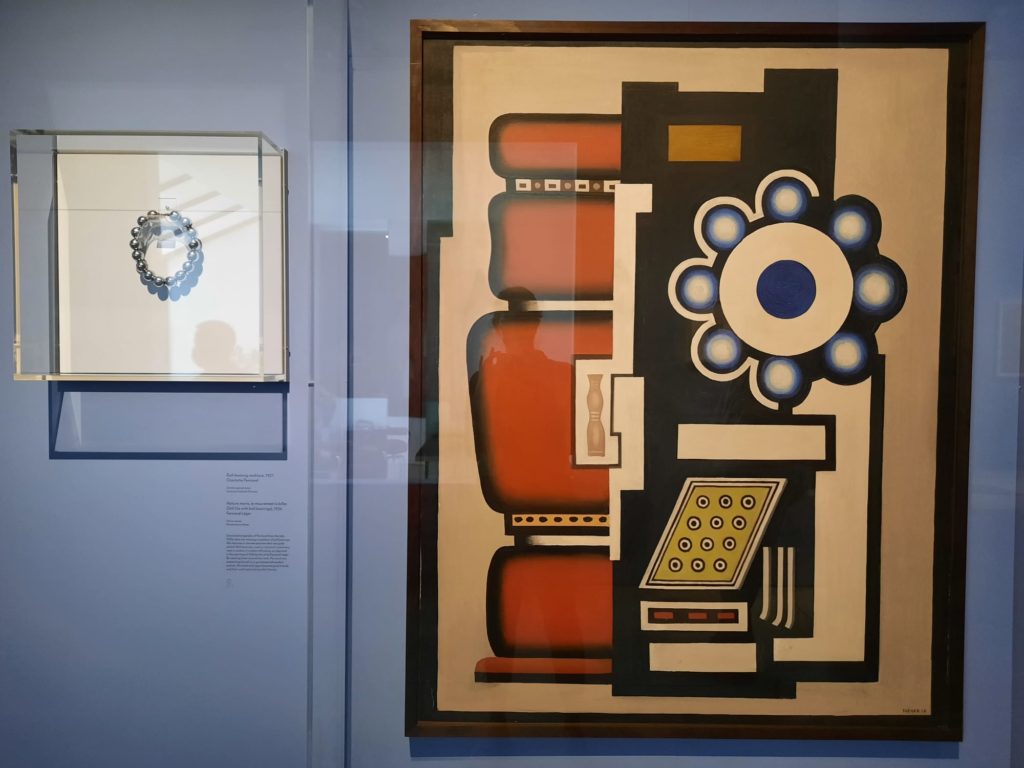
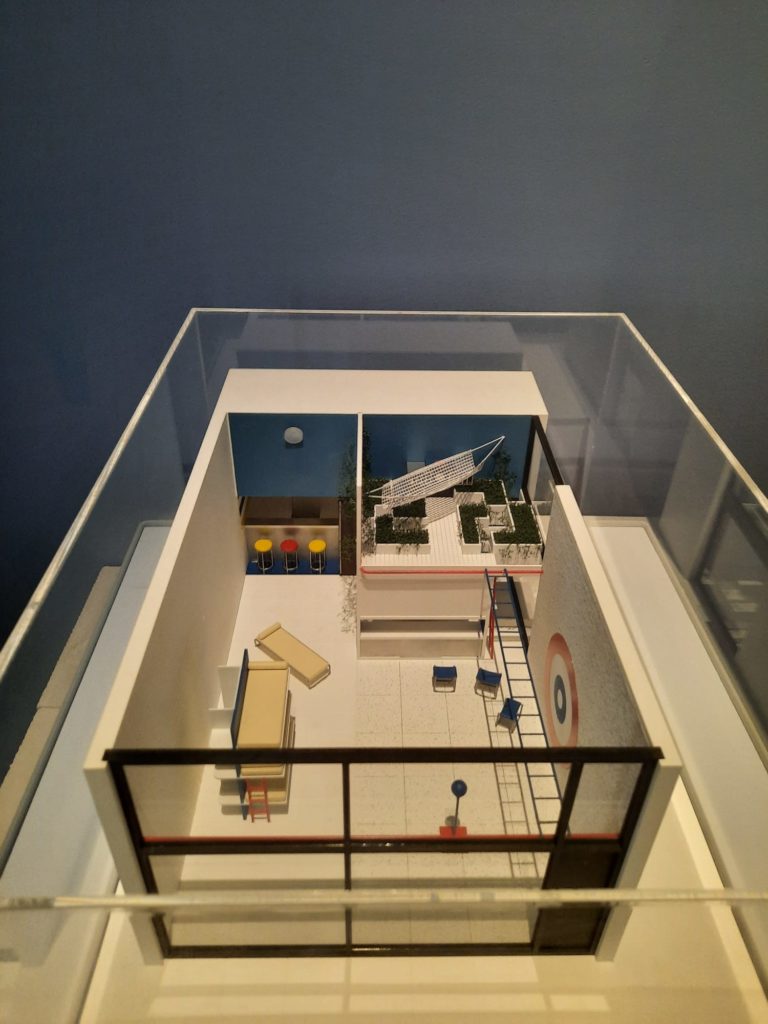
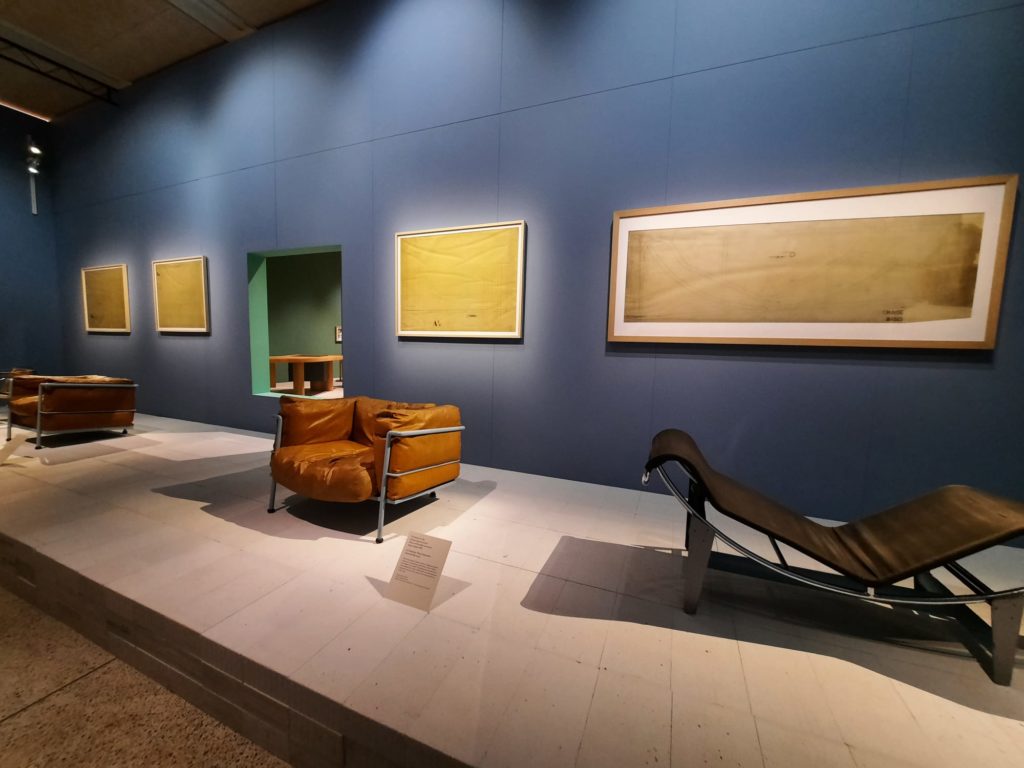
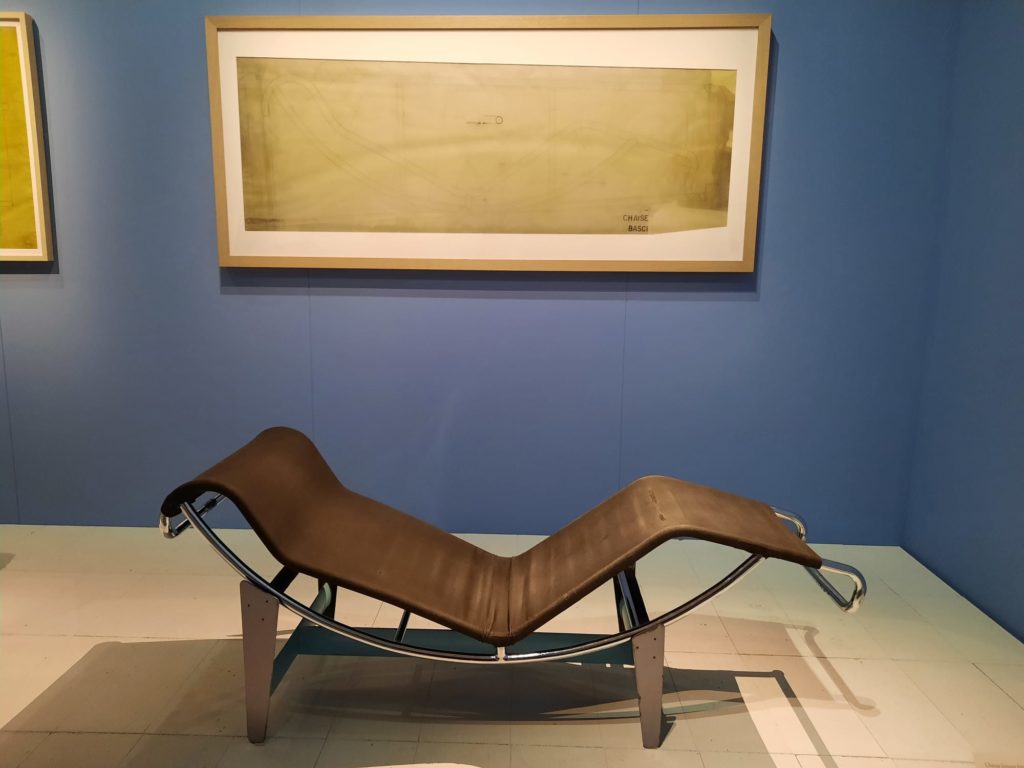

Charlotte Perriand: The Modern Life
It so happens that I used to work in the Design department of a major auction house. So I know a thing or two about Charlotte Perriand. This isn’t the case for everyone, however. Even my partner, who knows more about design and architecture than most, wasn’t familiar with her. On the other hand I’m sure most people have heard of Le Corbusier, whose studio Perriand worked in, and with whom she collaborated on several influential designs.
This is precisely the oversight which the Design Museum is aiming to address with this survey of her work. The exhibition is organised more or less by design project, which makes it more or less chronological. We start with some of Perriand’s early work, which is strikingly modern. The clean lines, judicious use of space and metal-framed furniture of her Bar sous le toit (bar beneath the roof) would not look out of place in an apartment today. It must have appeared startlingly futuristic in the 1920s. In fact, there is a room in the exhibition where visitors can sit on modern editions of Perriand’s most important designs (numbers 1, 2 and 7 on this list). I tried them all out, and can say that, 100 years on, they are sleek, comfortable, and I would be delighted to have any of them in my home.
From these early forays into machine-age living, Perriand synthesised a Japanese minimalism into her work; pioneered modular furniture; designed for the Cité Internationale Universitaire de Paris (where I was lucky enough to live once, but not in a Perriand-designed interior); and then moved on to ski lodges. Everywhere you look her designs are modern, in the sense of being practical and (sort of) affordable as well as stylish. What an influence she has had on us all.
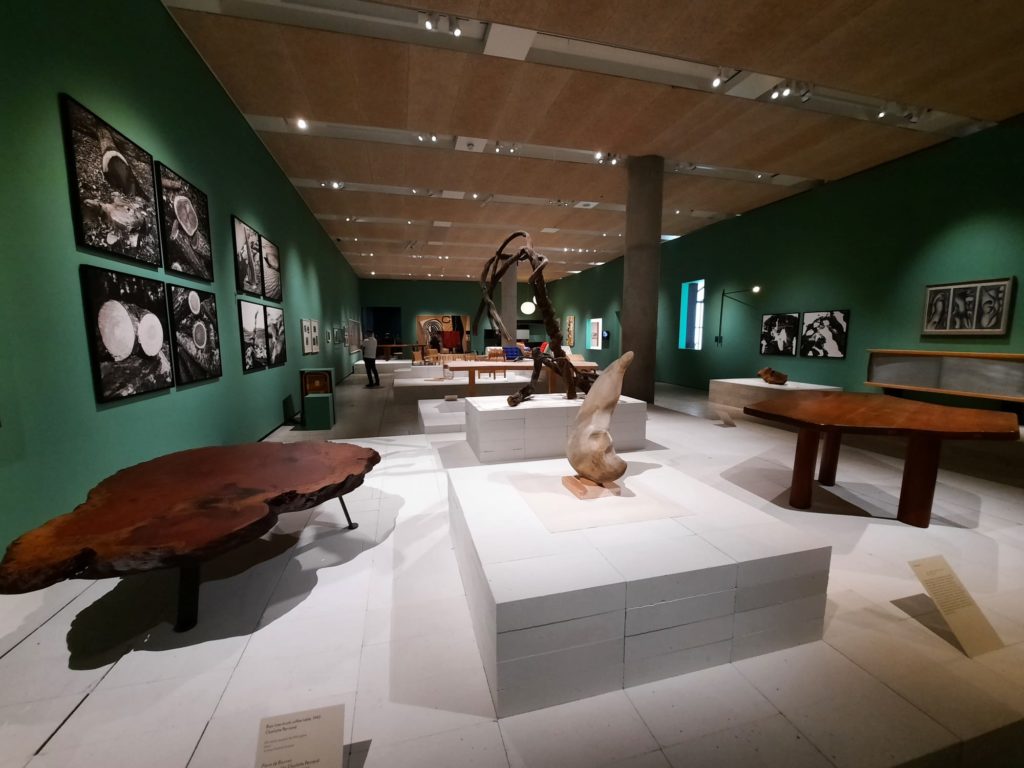
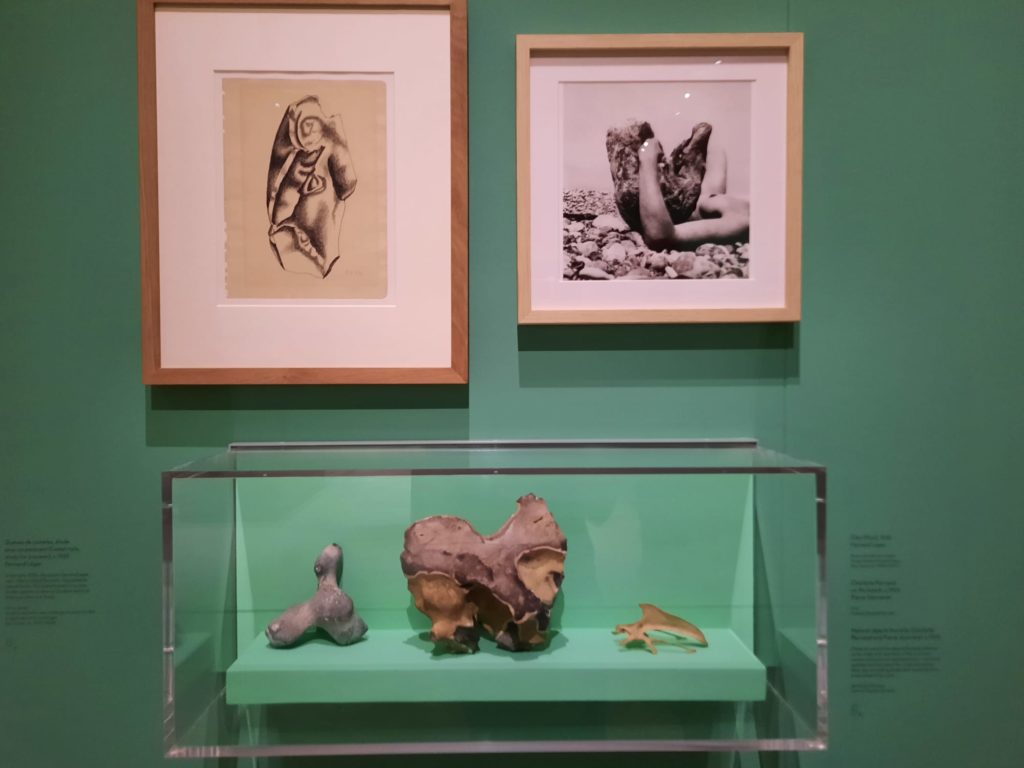
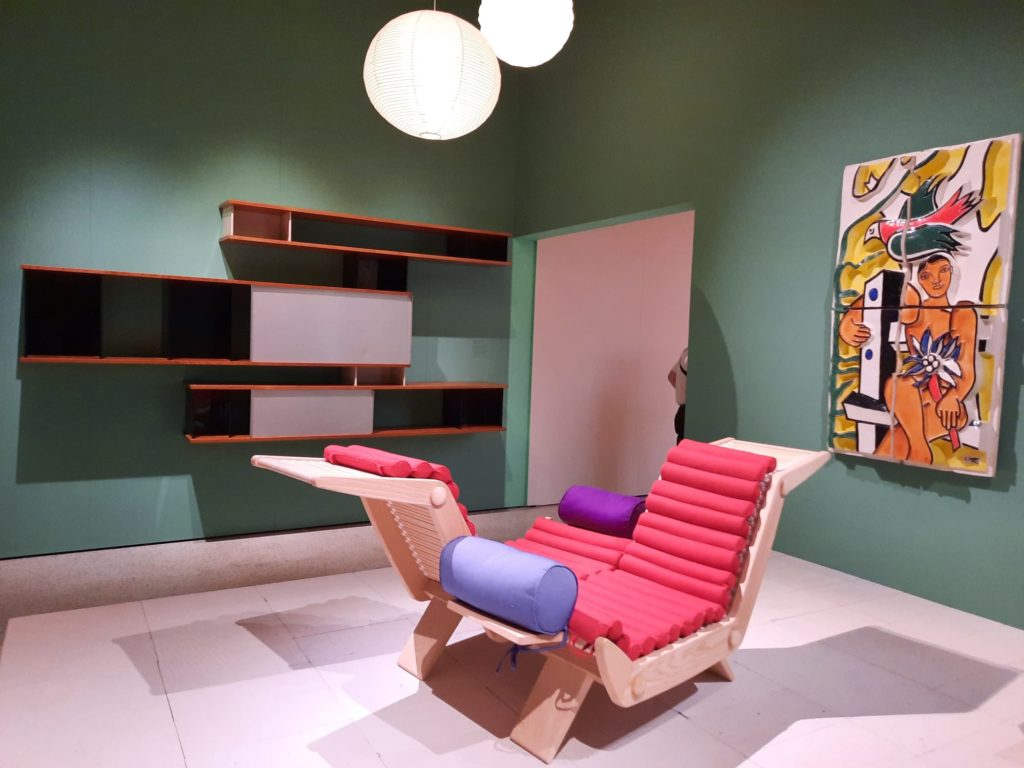
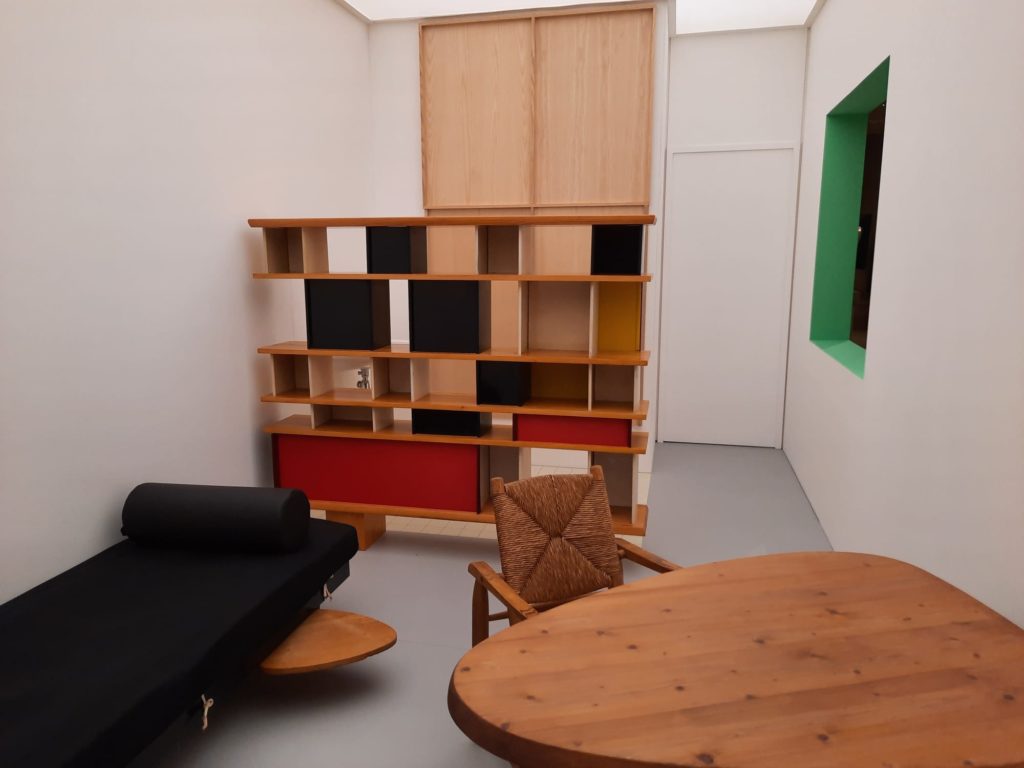
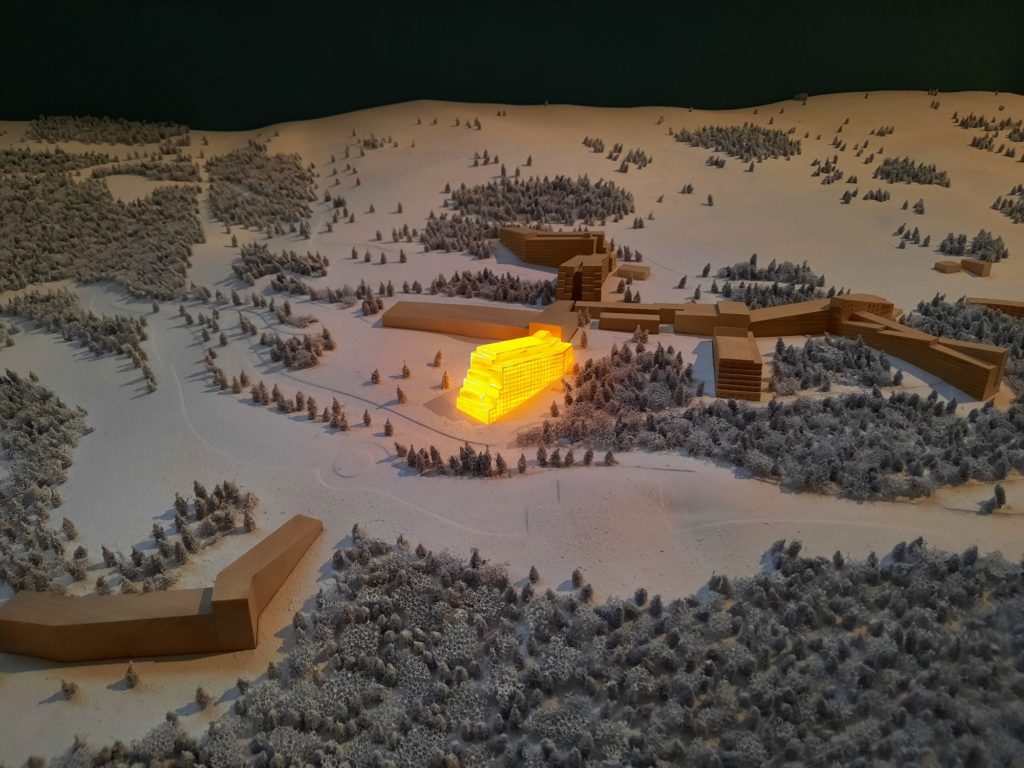
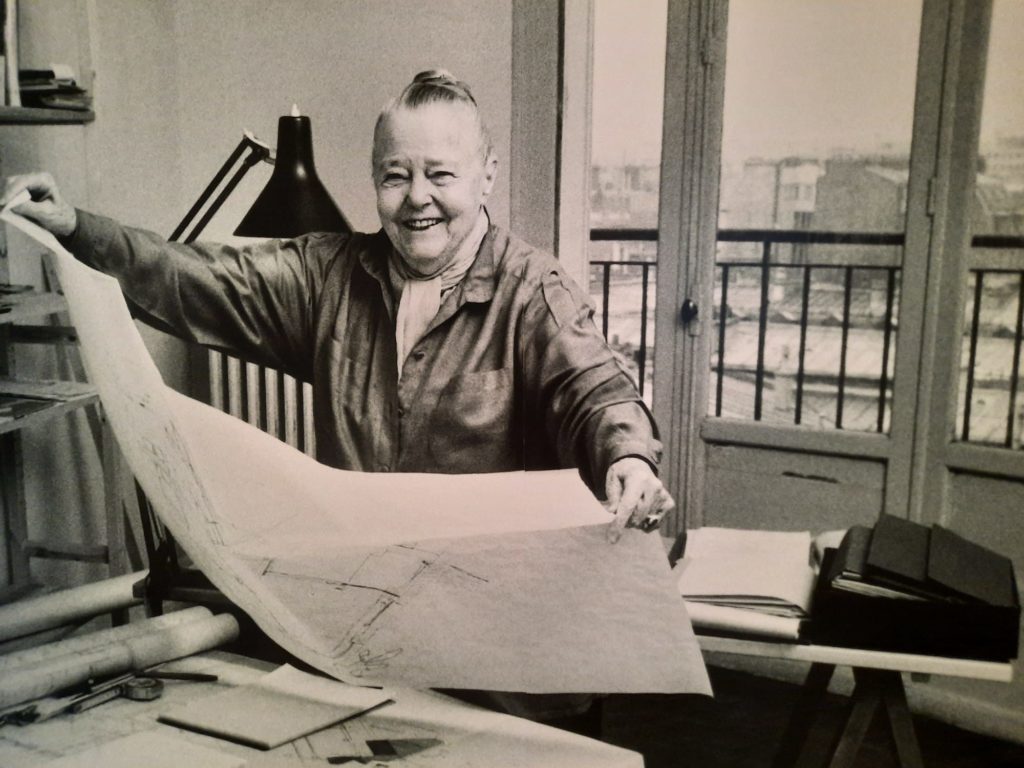
Charlotte Perriand: Designer First And Foremost
An interesting choice in the Design Museum’s exhibition is to focus purely on the design. Doesn’t sound that strange at first, does it? But in an exhibition focusing on the work of one individual, I am used to there being a bit more back story. Like with Eileen Agar recently at the Whitechapel Gallery; her childhood, family relationships, love affairs and so on all fed into her work. Seemingly not with Charlotte Perriand. In this exhibition she seems to arrive fully formed one day as a designer, knocking on Le Corbusier’s door only to be told “We don’t embroider cushions here.“
There is something in the exhibition of her friendships and collaborations with other designers. Collecting found objects on the beach with Pierre Jeanneret. Suggesting lighting by Isamu Noguchi to go with her shelving units. Synergies with Fernand Léger’s paintings. But it felt a bit like the woman herself was missing. What was it she loved about the mountains? How did she feel about her time in Japan immediately preceding their entry into WWII? What inspired her interest in design in the first place?
So this is a good chance to get to know Perriand’s designs, see them in situ in reconstructed rooms, and even try some of them out. It’s not such a good place to find out more about Charlotte Perriand the person. So it depends what you’re looking for in an exhibition. I enjoyed it regardless of these curatorial choices.
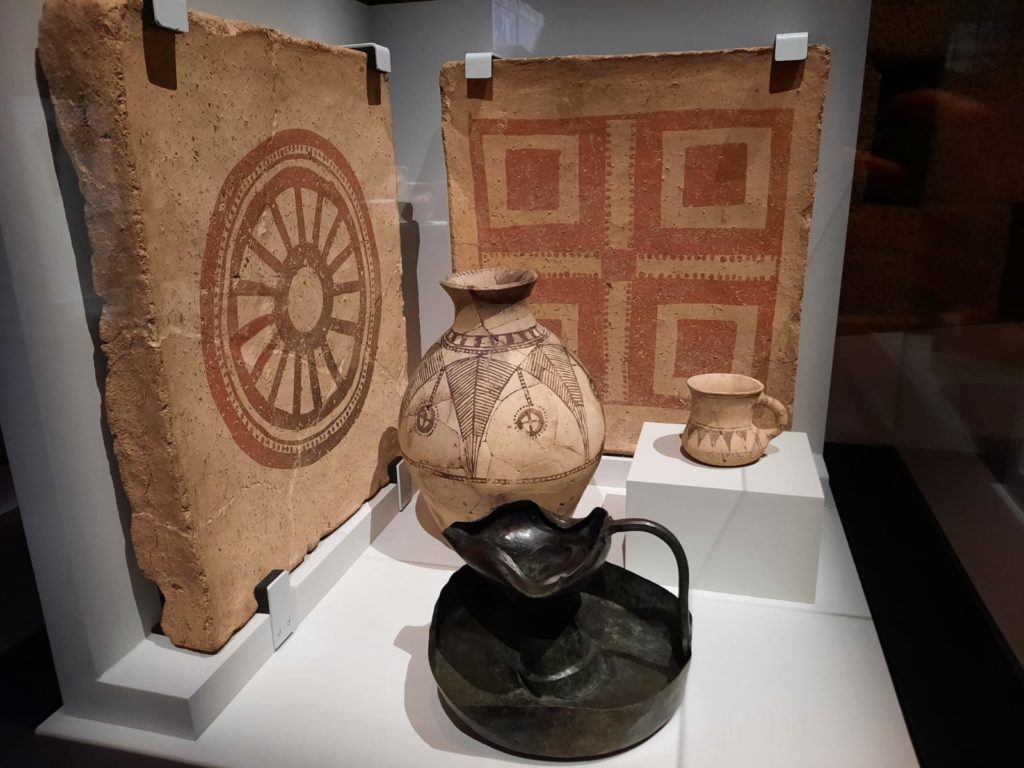
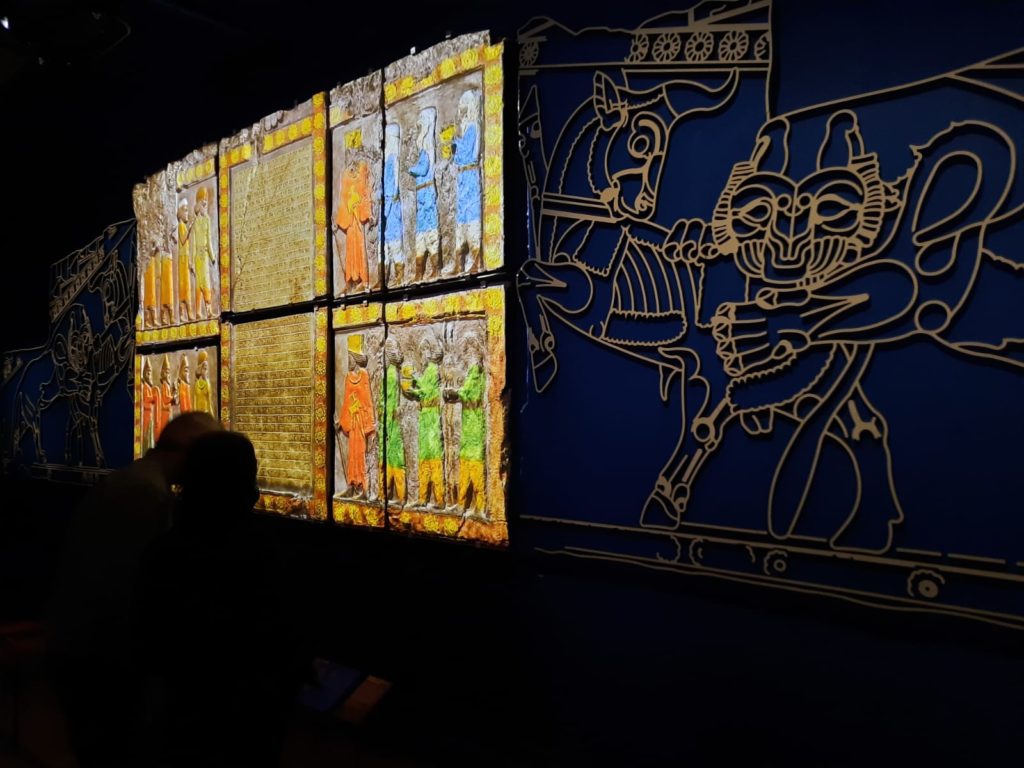
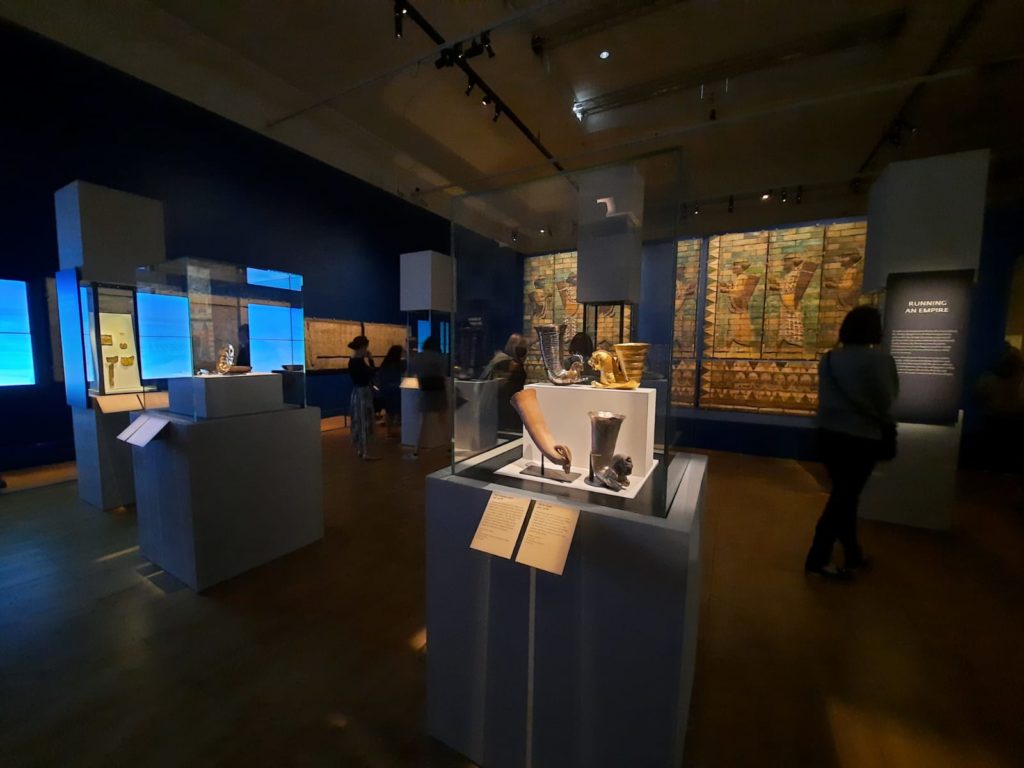
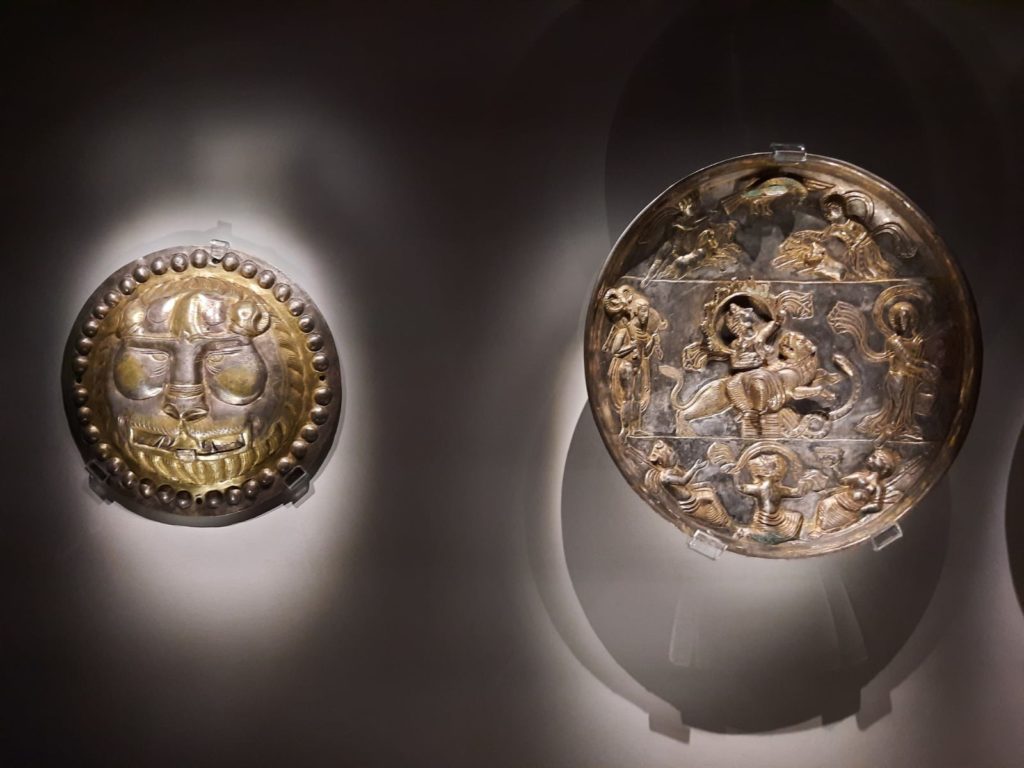
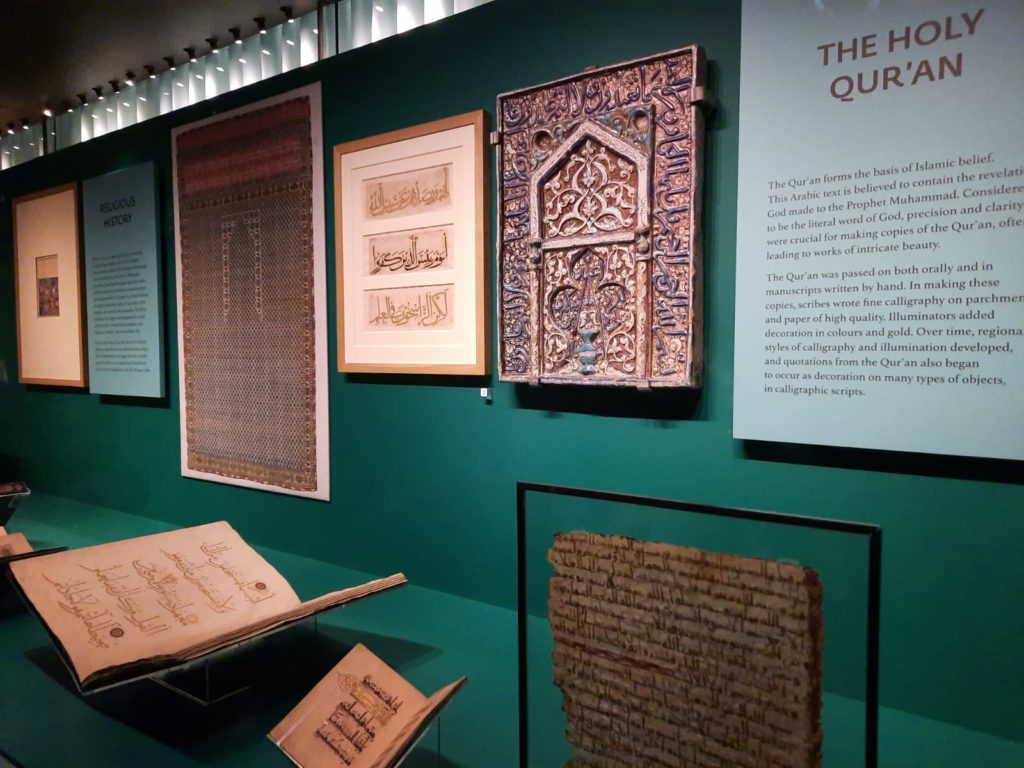
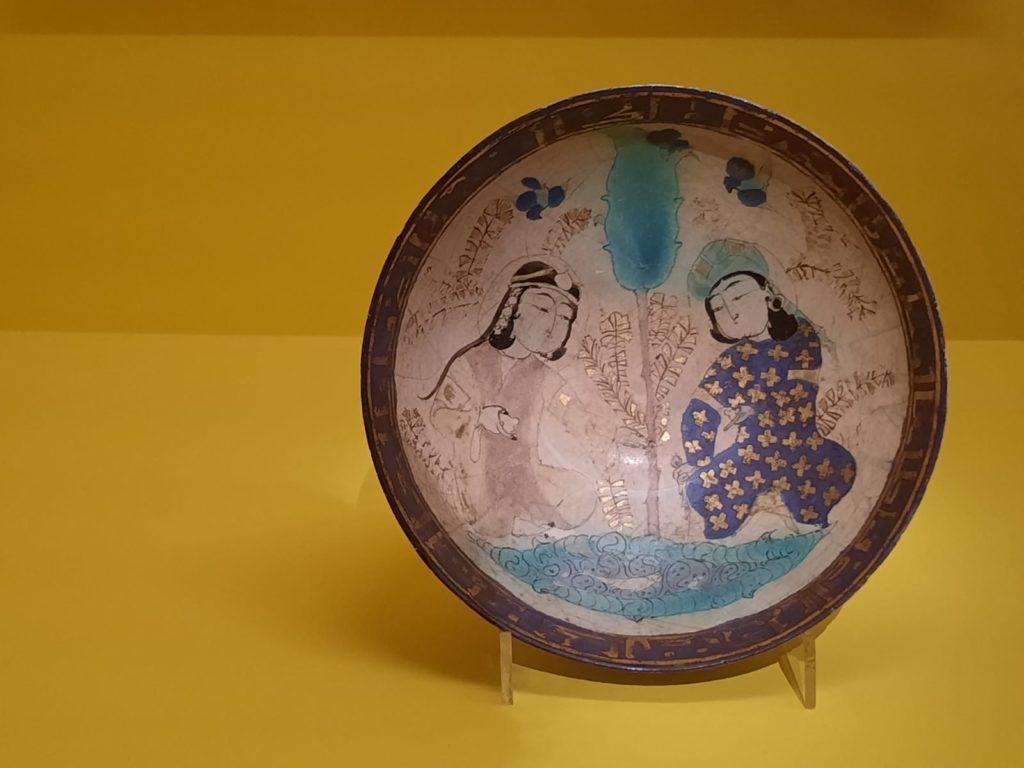
Epic Iran
Epic Iran takes us from the personal to the sweepingly historical. A chronological survey, this exhibition at the V&A takes in the major developments in Iran’s history. It starts with archaeological finds from c. 3000 BCE. We know little about these peoples – they were probably Elamite speakers, whose wealthiest settlements rivalled civilisations like Egypt and Mesapotamia. From these fascinating early finds we move on to the glory of Persepolis and the Persian Empire; via the conversion to Islam; to today’s Iran, the latter story told through contemporary art.
That is an incredibly short synopsis of an exhibition with a lot more to it. Epic Iran is at pains to demonstrate some of the threads of continuity as well as the vagaries of succeeding empires. The centrality of poetry, art and culture, for example. Or certain customs like ‘robes of honour‘, which existed in different contexts until relatively recent times. To tell this story, the V&A has loaned objects from around the world and closer to home. The Met in New York is well represented. As is the Ashmolean in Oxford. Interestingly, a lot of the most interesting works come from the Sarikhani Collection – the private collection of an Iranian family based near Henley. What I didn’t see much/any of were loans from Iran itself; apparently this was discussed but fell through.
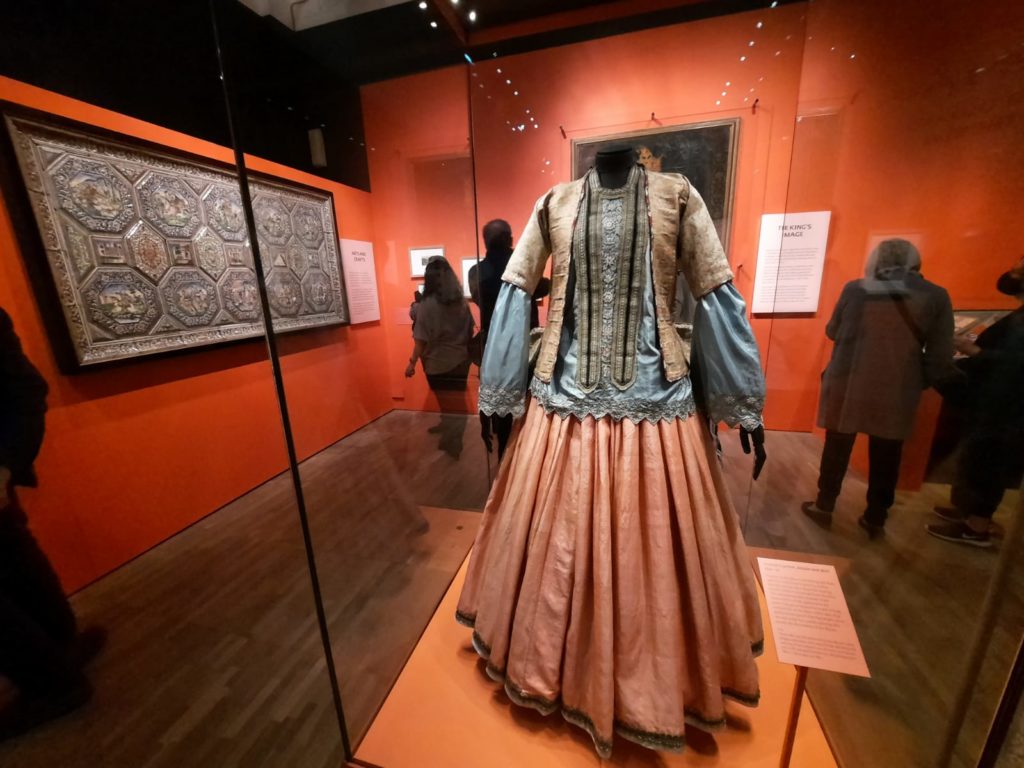
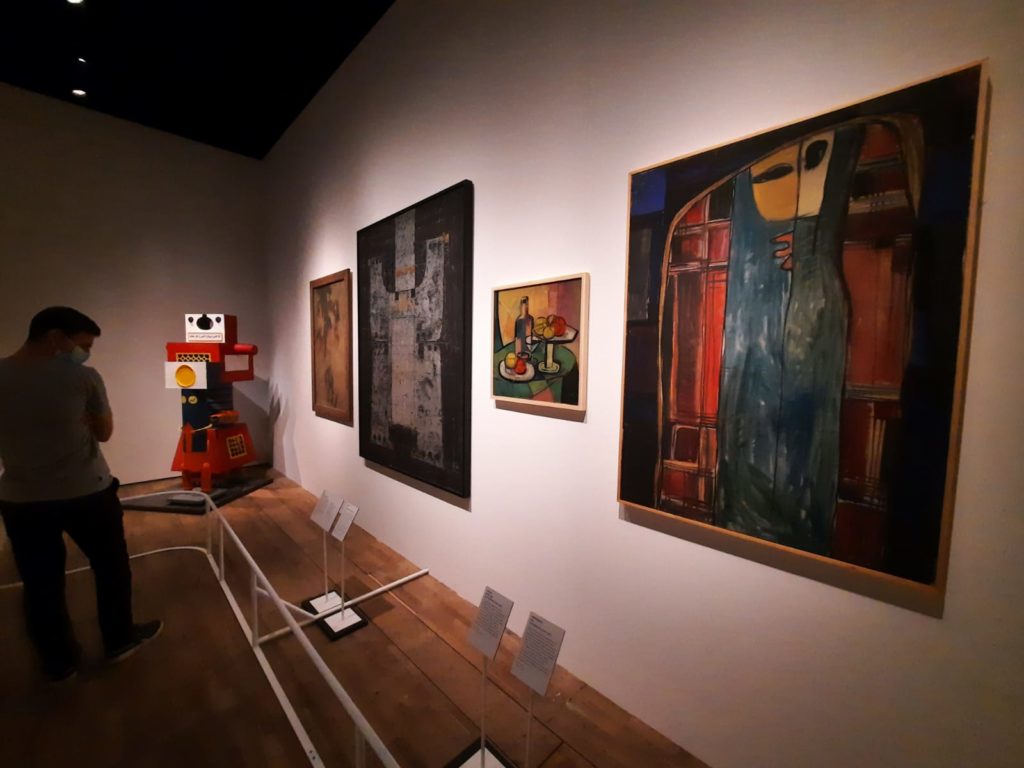
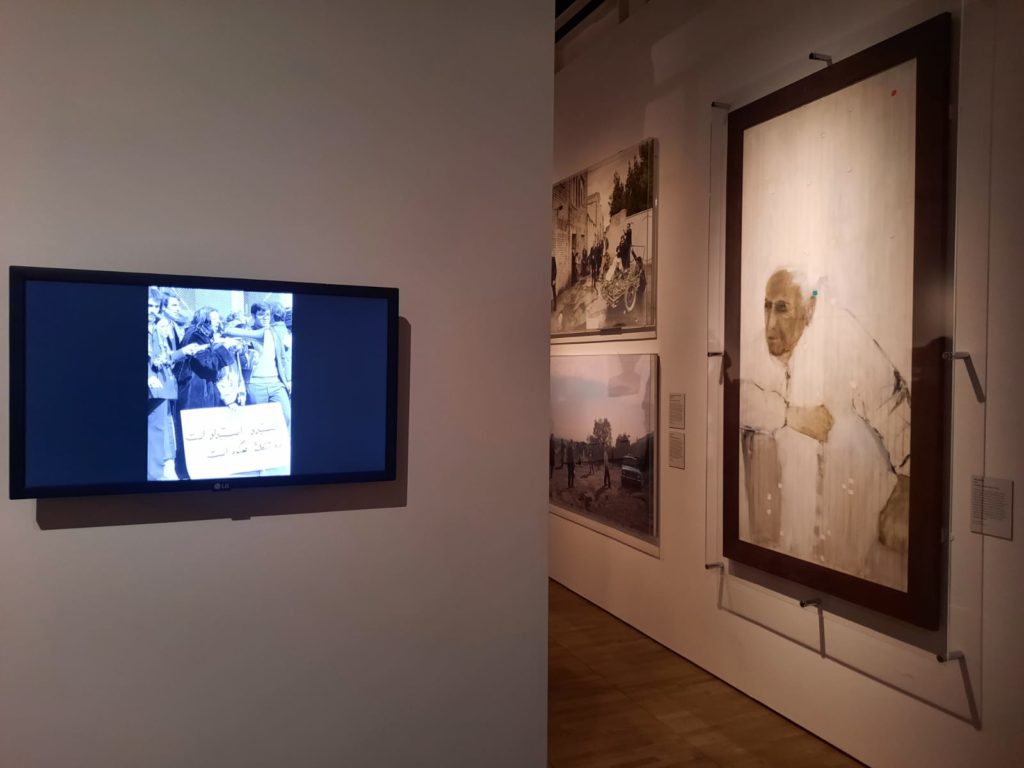
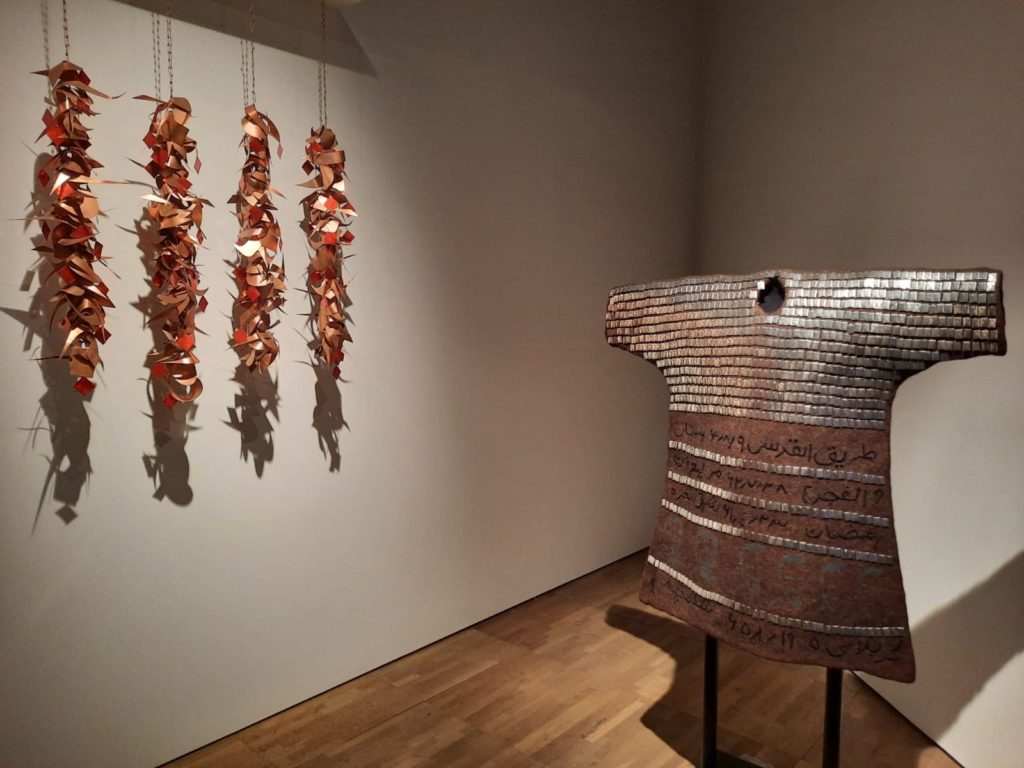
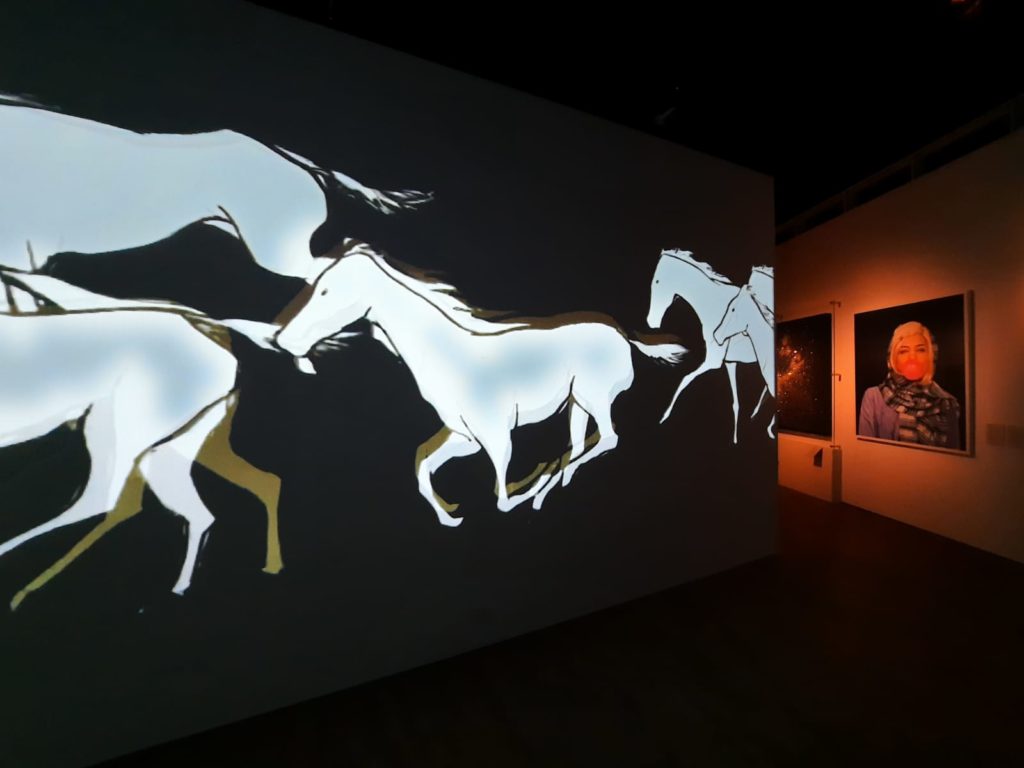
Sweeping And Evocative
In my opinion, Epic Iran is best when evoking a country that few visitors have had the opportunity to visit. I absolutely loved the room in the video above, where triangular painted canvases depicting tile designs from the domes of mosques are brought to life. It helps that I had recently seen a documentary on the conservation of these enormous paintings, so knew just what had gone into getting them on display. Likewise I appreciated the music and spoken poetry which brought the subject matter to life.
All in all, I found Epic Iran to be a very well-presented exhibition. The information panels are clear, with a timeline on each so you can understand the period the room covers. The choice to address contemporary history through art is an interesting one, which maybe avoids any political headaches for the museum. Likewise the Iranian Revolution is directly addressed only in one small display (third image from bottom). We are looking at 5,000 years of history, however; perhaps our modern concerns have simply been recontextualised into an ever-changing part of the world.
Tickets to this exhibition are very hard to come by. If you would like to see it for yourself, they go on sale at midday every Tuesday.
Charlotte Perriand: The Modern Life: 3.5/5
Epic Iran: 4/5
Charlotte Perriand on until 5 September 2021
Epic Iran on until 12 September 2021
Keep up with London exhibition news so you don’t miss a thing:
If you see this after your page is loaded completely, leafletJS files are missing.

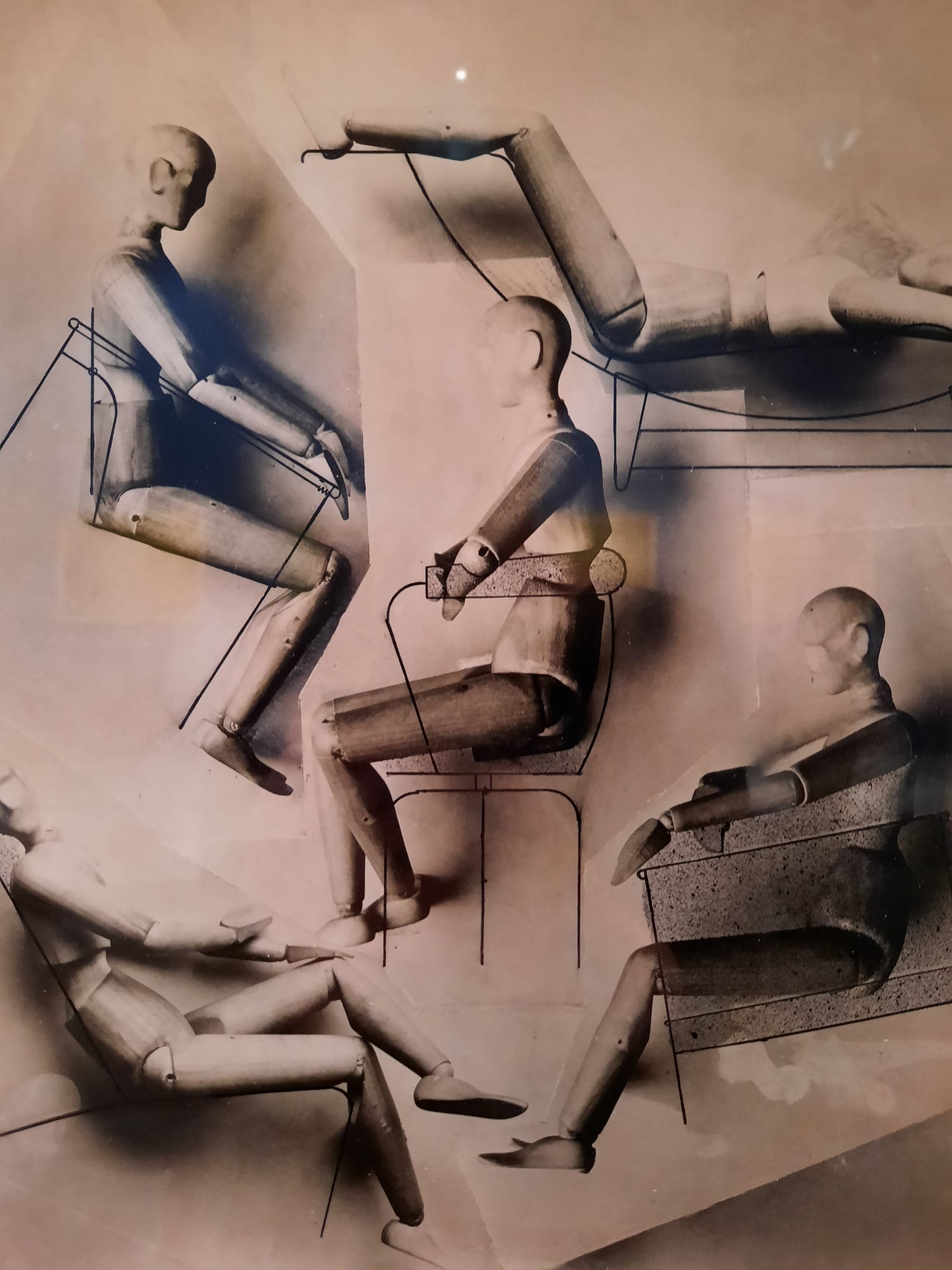
One thought on “CLOSING SOON – Charlotte Perriand, Design Museum // Epic Iran, V&A”